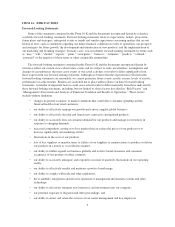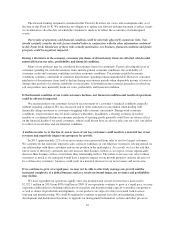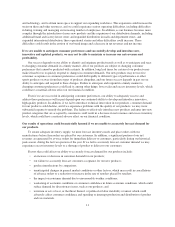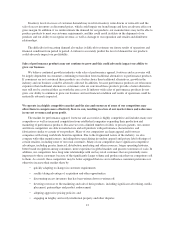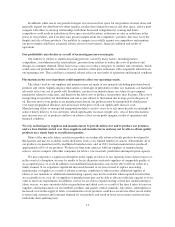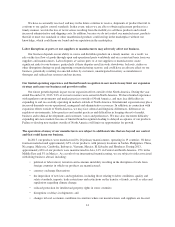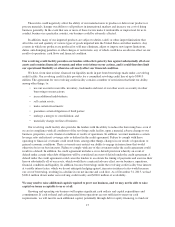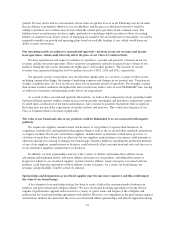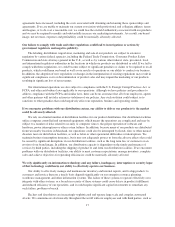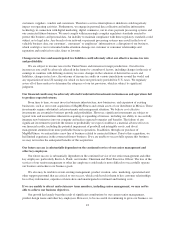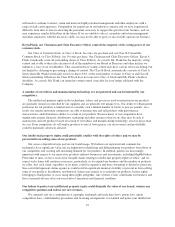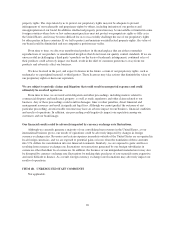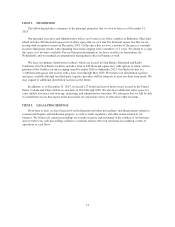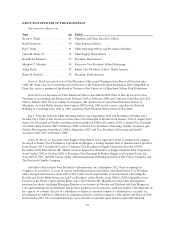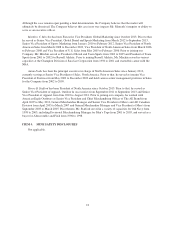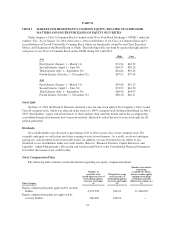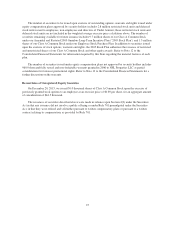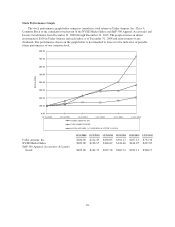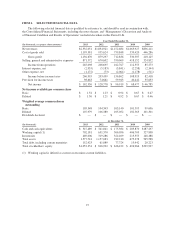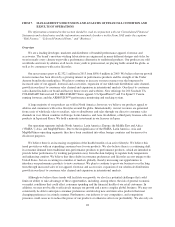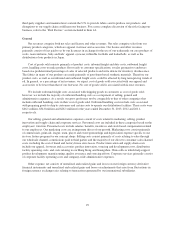Under Armour 2013 Annual Report Download - page 29
Download and view the complete annual report
Please find page 29 of the 2013 Under Armour annual report below. You can navigate through the pages in the report by either clicking on the pages listed below, or by using the keyword search tool below to find specific information within the annual report.will need to continue to attract, retain and motivate highly talented management and other employees with a
range of skills and experience. Competition for employees in our industry is intense and we have experienced
difficulty from time to time in attracting the personnel necessary to support the growth of our business, and we
may experience similar difficulties in the future. If we are unable to attract, assimilate and retain management
and other employees with the necessary skills, we may not be able to grow or successfully operate our business.
Kevin Plank, our Chairman and Chief Executive Officer controls the majority of the voting power of our
common stock.
Our Class A Common Stock, or Class A Stock, has one vote per share and our Class B Convertible
Common Stock, or Class B Stock, has 10 votes per share. Our Chairman and Chief Executive Officer, Kevin A.
Plank, beneficially owns all outstanding shares of Class B Stock. As a result, Mr. Plank has the majority voting
control and is able to direct the election of all of the members of our Board of Directors and other matters we
submit to a vote of our stockholders. This concentration of voting control may have various effects including, but
not limited to, delaying or preventing a change of control. The Class B Stock automatically converts to Class A
Stock when Mr. Plank beneficially owns less than 15.0% of the total number of shares of Class A and Class B
Stock outstanding. Otherwise the Class B Stock does not convert to Class A Stock until Mr. Plank’s death or
disability. As a result, Mr. Plank can retain his voting control even after he is no longer affiliated with the
Company.
A number of our fabrics and manufacturing technology are not patented and can be imitated by our
competitors.
The intellectual property rights in the technology, fabrics and processes used to manufacture our products
are generally owned or controlled by our suppliers and are generally not unique to us. Our ability to obtain patent
protection for our products is limited and we currently own a limited number of fabric or process patents. As a
result, our current and future competitors are able to manufacture and sell products with performance
characteristics and fabrications similar to certain of our products. Because many of our competitors have
significantly greater financial, distribution, marketing and other resources than we do, they may be able to
manufacture and sell products based on certain of our fabrics and manufacturing technology at lower prices than
we can. If our competitors do sell similar products to ours at lower prices, our net revenues and profitability
could be materially adversely affected.
Our intellectual property rights could potentially conflict with the rights of others and we may be
prevented from selling some of our products.
Our success depends in large part on our brand image. We believe our registered and common law
trademarks have significant value and are important to identifying and differentiating our products from those of
our competitors and creating and sustaining demand for our products. In addition, patents are increasingly
important with respect to our innovative products and new businesses and investments, including MapMyFitness.
From time to time, we have received or brought claims relating to intellectual property rights of others, and we
expect such claims will continue or increase, particularly as we expand our business and the number of products
we offer. Any such claim, regardless of its merit, could be expensive and time consuming to defend or prosecute.
Successful infringement claims against us could result in significant monetary liability or prevent us from selling
some of our products. In addition, resolution of claims may require us to redesign our products, license rights
belonging to third parties or cease using those rights altogether. Any of these events could harm our business and
have a material adverse effect on our results of operations and financial condition.
Our failure to protect our intellectual property rights could diminish the value of our brand, weaken our
competitive position and reduce our net revenues.
We currently rely on a combination of copyright, trademark and trade dress laws, patent laws, unfair
competition laws, confidentiality procedures and licensing arrangements to establish and protect our intellectual
19


